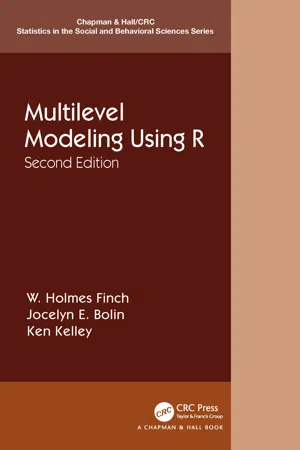
Multilevel Modeling Using R
W. Holmes Finch,Jocelyn E. Bolin,Ken Kelley
- 242 páginas
- English
- ePUB (apto para móviles)
- Disponible en iOS y Android
Multilevel Modeling Using R
W. Holmes Finch,Jocelyn E. Bolin,Ken Kelley
Información del libro
Like its bestselling predecessor, Multilevel Modeling Using R, Second Edition provides the reader with a helpful guide to conducting multilevel data modeling using the R software environment.
After reviewing standard linear models, the authors present the basics of multilevel models and explain how to fit these models using R. They then show how to employ multilevel modeling with longitudinal data and demonstrate the valuable graphical options in R. The book also describes models for categorical dependent variables in both single level and multilevel data.
New in the Second Edition:
-
- Features the use of lmer (instead of lme ) and including the most up to date approaches for obtaining confidence intervals for the model parameters.
-
- Discusses measures of R2 (the squared multiple correlation coefficient) and overall model fit.
-
- Adds a chapter on nonparametric and robust approaches to estimating multilevel models, including rank based, heavy tailed distributions, and the multilevel lasso.
-
- Includes a new chapter on multivariate multilevel models.
-
- Presents new sections on micro-macro models and multilevel generalized additive models.
This thoroughly updated revision gives the reader state-of-the-art tools to launch their own investigations in multilevel modeling and gain insight into their research.
About the Authors:
W. Holmes Finch
is the George and Frances Ball Distinguished Professor of Educational Psychology at Ball State University.
Jocelyn E. Bolin
is a Professor in the Department of Educational Psychology at Ball State University.
Ken Kelley
is the Edward F. Sorin Society Professor of IT, Analytics and Operations and the Associate Dean for Faculty and Research for the Mendoza College of Business at the University of Notre Dame.
Preguntas frecuentes
Información
1
Linear Models
Simple Linear Regression
| (1.1) |